#wife of pedro ii of brazil
Text
Palacete Grandmasson

In Brazil, the mansions built by the elite during the Belle Epoque were called "palacetes" (something like "small palace"), because their owners usually imported projects, construction materials, furniture and other decorative objects from Europe; Mainly from France, Italy, England and Germany.



The palacete in question was built by the frenchman Antoine Émile Grandmasson (1856-1932). Born in Besançon, in 1888/89 he was called by Emperor D. Pedro II to Rio de Janeiro, where he created the Polytechnic School of the University and inaugurated the chair of industrial chemistry from which he taught many generations who surrounded him with respectful admiration. He was also a Member of the Brazilian Academy of Sciences, Treasurer General of Hospitals in Rio, Director General of several industrial and financial companies, and Officer of the Legion of Honor. Over time, he became something of a leader among French immigrants in Rio de Janeiro.


Unfortunately, I didn't find much information about the palacete itself, only that it was built in 1911, on Botafogo Beach in Rio de Janeiro, in Beaux Arts style. Monsieur Grandmasson received in his house all the distinguished French passing through Rio, where he always they were assured of an affectionate and generous welcome. Antoine married twice during his lifetime and had two daughters, one with each wife. The palace was demolished in 1960, after years of abandonment.


I didn't find the floor plans, just three photos of the palacete during its construction. In this version for The Sims, I decorated the interior and arranged the rooms according to my imagination.









27 notes
·
View notes
Text
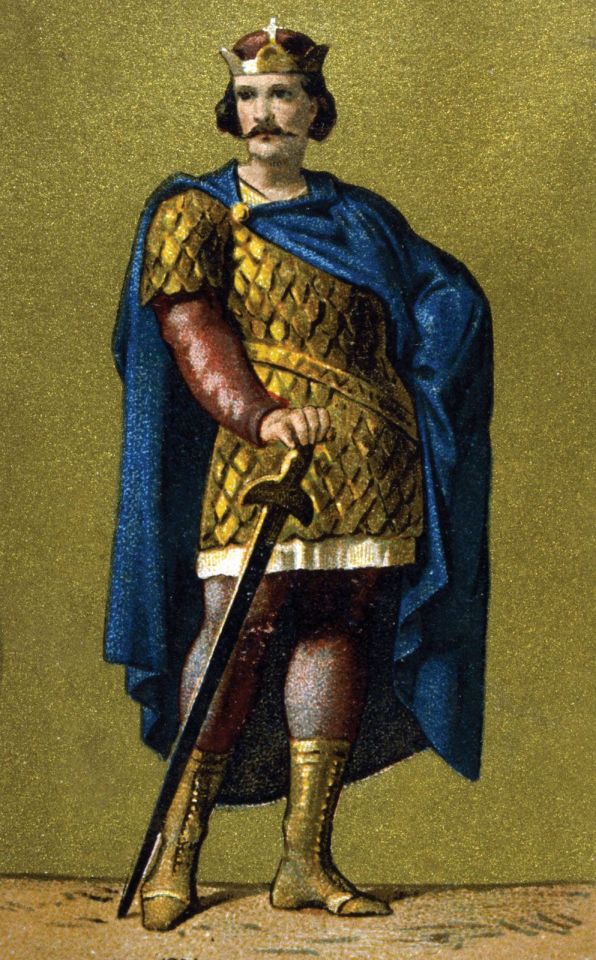
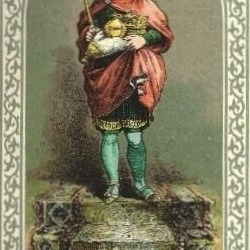



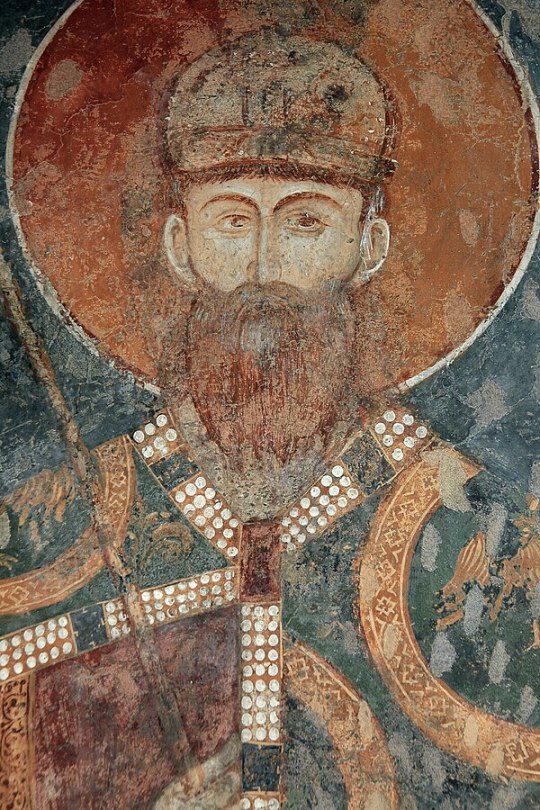
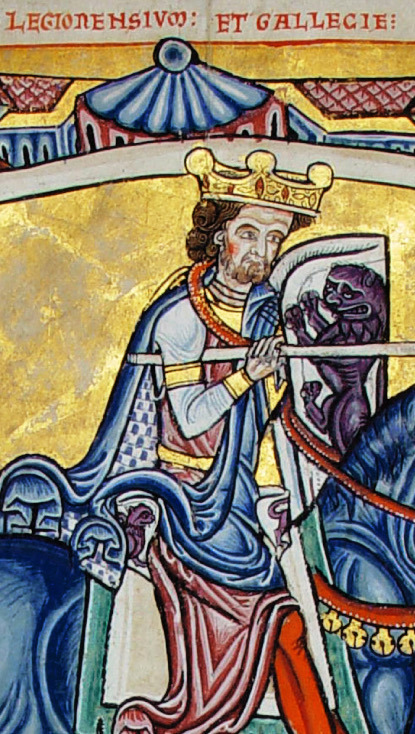
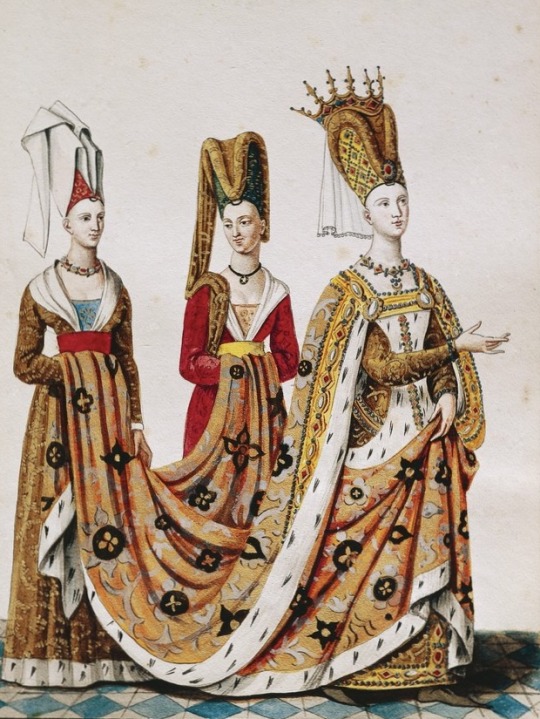
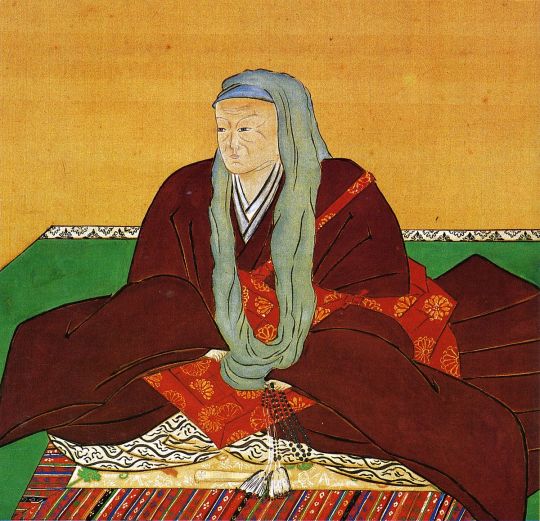
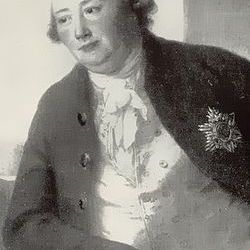
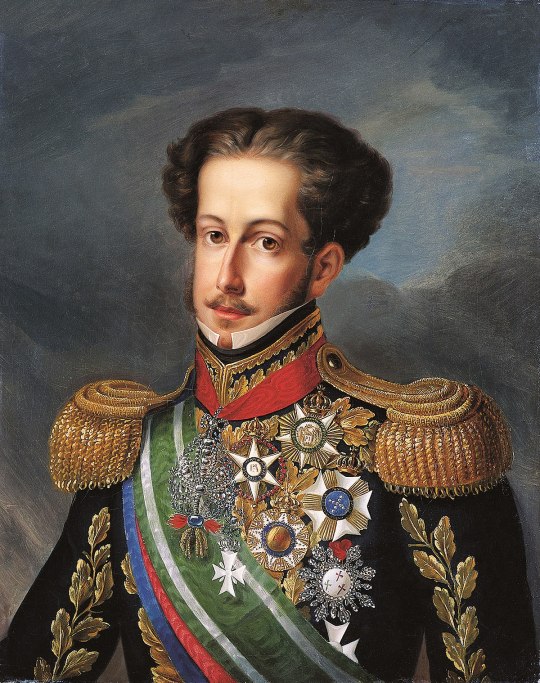
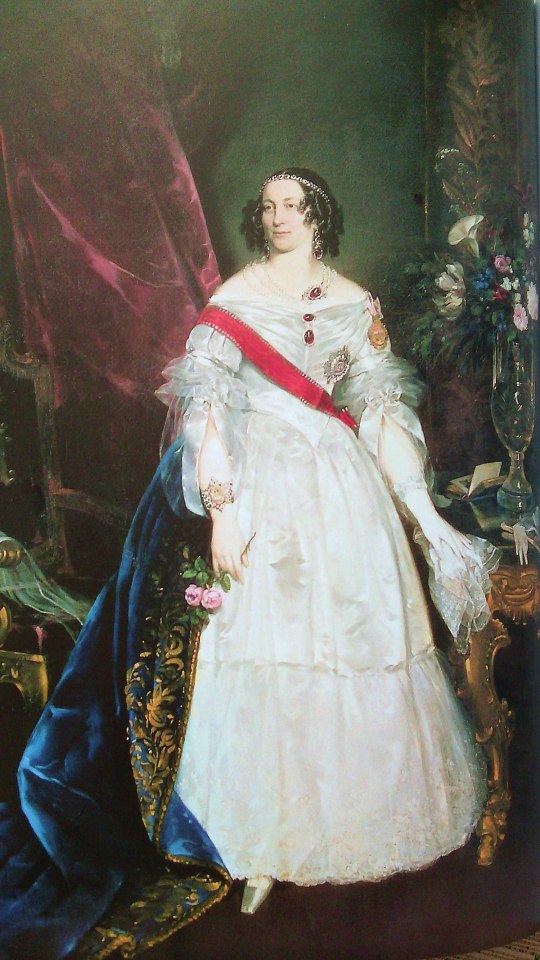
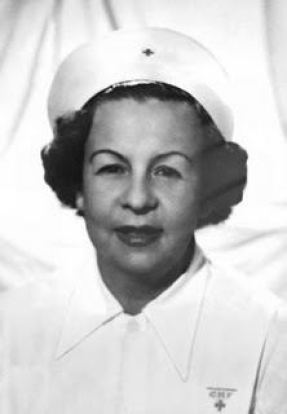
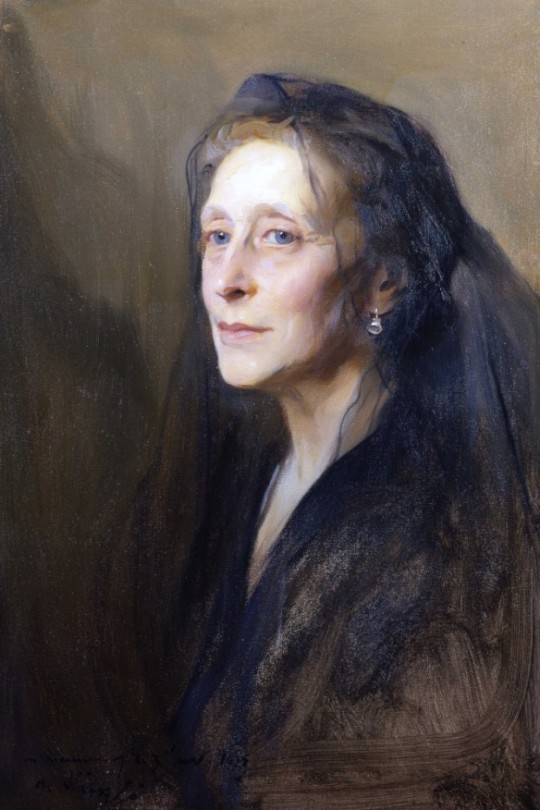
Royal Deaths, 24th September.
768 - Pippin III, the short, King of France.
911 - Louis the child, last Carolingian German King.
1120 - Welf II, Duke of Bavaria.
1143 - Agnes of Germany, daughter of Henry IV, Holy Roman Emperor.
1180 - Manuel I Komnenos, Emperor of the Byzantine Empire.
1228 - Saint Stefan Nemanjic, Grand Prince of Serbia
1230 - Alfonso IX, King of León and Galicia.
1435 - Isabeau of Bavaria, Queen and wife of Charles VI of France, who ruled during her husband's periods of insanity.
1732 - Emperor Reigen, 112th Emperor of Japan.
1812 - Friedrich Karl August, Prince of Waldeck and Pyrmont.
1834 - Pedro I, Emperor of Brazil and King of Portugal.
1860 - Marie of Württemberg, Duchess of Saxe-Coburg and Gotha, second wife and niece of Ernst I, Duke of Saxe-Coburg and Gotha.
1891 - Alexandra of Greece and Denmark, Grand Duchess Alexandra Georgievna of Russia, daughter of King George I of Greece, wife of Grand Duke Paul Alexandrovich of Russia.
1930 - Marie Juliette Louvet, mistress of Prince Louis Il of Monaco, mother of his only child Princess Charlotte of Monaco.
1950 - Princess Victoria of Hesse and by Rhine, Marchioness of Milford Haven, granddaughter of Queen Victoria.
3 notes
·
View notes
Note
Ok but imagine a what if with Charlotte marrying Pedro and Max marrying Maria Amelia 😭 that could either go terribly good or terribly wrong for them. They seem to have been linked since the begining
Born to be uncle and niece-in-law, forced to become husband and wife sigh.
Jfkjfj ok speaking seriously, I also wonder how that would've worked out! Tho personally I think Max still would've accepted the Mexican throne regardless of whom he married; in fact it's believed that Max visiting Maria Amelia's half-brother Pedro II of Brazil (who was also Max's cousin because that family tree was almost a circle) played a huge role in convincing him that a monarchy in America was possible. Who knows, maybe Maria Amelia would've been even more on board than Charlotte in the Mexican adventure.
#as for them being linked since the beginning: that's what happens when you limit your marriage pool to people of your same religion#of which there are only like five ruling houses#maximilian i of mexico#empress carlota of mexico#princess maria amelia of brazil#asks
2 notes
·
View notes
Text
Events 3.9
141 BC – Liu Che, posthumously known as Emperor Wu of Han, assumes the throne over the Han dynasty of China.
1009 – First known mention of Lithuania, in the annals of the monastery of Quedlinburg.
1226 – Khwarazmian sultan Jalal ad-Din conquers the Georgian capital of Tbilisi.
1230 – Bulgarian Tsar Ivan Asen II defeats Theodore of Epirus in the Battle of Klokotnitsa.
1500 – The fleet of Pedro Álvares Cabral leaves Lisbon for the Indies. The fleet will discover Brazil which lies within boundaries granted to Portugal in the Treaty of Tordesillas in 1494.
1701 – Safavid troops retreat from Basra, ending a three-year occupation.
1765 – After a campaign by the writer Voltaire, judges in Paris posthumously exonerate Jean Calas of murdering his son. Calas had been tortured and executed in 1762 on the charge, though his son may have actually died by suicide.
1776 – The Wealth of Nations by Scottish economist and philosopher Adam Smith is published.
1796 – Napoléon Bonaparte marries his first wife, Joséphine de Beauharnais.
1811 – Paraguayan forces defeat Manuel Belgrano at the Battle of Tacuarí.
1815 – Francis Ronalds describes the first battery-operated clock in the Philosophical Magazine.
1841 – The U.S. Supreme Court rules in the United States v. The Amistad case that captive Africans who had seized control of the ship carrying them had been taken into slavery illegally.
1842 – Giuseppe Verdi's third opera, Nabucco, receives its première performance in Milan; its success establishes Verdi as one of Italy's foremost opera composers.
1842 – The first documented discovery of gold in California occurs at Rancho San Francisco, six years before the California Gold Rush.
1847 – Mexican–American War: The first large-scale amphibious assault in U.S. history is launched in the Siege of Veracruz.
1862 – American Civil War: USS Monitor and CSS Virginia (rebuilt from the engines and lower hull of the USS Merrimack) fight to a draw in the Battle of Hampton Roads, the first battle between two ironclad warships.
1908 – Inter Milan was founded on Football Club Internazionale, following a schism from A.C. Milan.
1916 – Mexican Revolution: Pancho Villa leads nearly 500 Mexican raiders in an attack against the border town of Columbus, New Mexico.
1933 – Great Depression: President Franklin D. Roosevelt submits the Emergency Banking Act to Congress, the first of his New Deal policies.
1942 – World War II: Dutch East Indies unconditionally surrendered to the Japanese forces in Kalijati, Subang, West Java, and the Japanese completed their Dutch East Indies campaign.
1944 – World War II: Soviet Army planes attack Tallinn, Estonia.
1945 – World War II: A coup d'état by Japanese forces in French Indochina removes the French from power.
1945 – World War II: Allied forces carry out firebombing over Tokyo, destroying most of the capital and killing over 100,000 civilians.
1946 – Bolton Wanderers stadium disaster at Burnden Park, Bolton, England, kills 33 and injures hundreds more.
1954 – McCarthyism: CBS television broadcasts the See It Now episode, "A Report on Senator Joseph McCarthy", produced by Fred Friendly.
1956 – Soviet forces suppress mass demonstrations in the Georgian SSR, reacting to Nikita Khrushchev's de-Stalinization policy.
1957 – The 8.6 Mw Andreanof Islands earthquake shakes the Aleutian Islands, causing over $5 million in damage from ground movement and a destructive tsunami.
1959 – The Barbie doll makes its debut at the American International Toy Fair in New York.
1960 – Dr. Belding Hibbard Scribner implants for the first time a shunt he invented into a patient, which allows the patient to receive hemodialysis on a regular basis.
1961 – Sputnik 9 successfully launches, carrying a dog and a human dummy, and demonstrating that the Soviet Union was ready to begin human spaceflight.
1967 – Trans World Airlines Flight 553 crashes in a field in Concord Township, Ohio following a mid-air collision with a Beechcraft Baron, killing 26 people.
1974 – The Mars 7 Flyby bus releases the descent module too early, missing Mars.
1976 – Forty-two people die in the Cavalese cable car disaster, the worst cable-car accident to date.
1977 – The Hanafi Siege: In a 39-hour standoff, armed Hanafi Muslims seize three Washington, D.C., buildings.
1978 – President Soeharto inaugurated Jagorawi Toll Road, the first toll highway in Indonesia, connecting Jakarta, Bogor and Ciawi, West Java.
1987 – Chrysler announces its acquisition of American Motors Corporation
1997 – Comet Hale–Bopp: Observers in China, Mongolia and eastern Siberia are treated to a rare double feature as an eclipse permits Hale-Bopp to be seen during the day. As the comet made its closest approach to Earth on March 26, all 39 active members of the Heaven's Gate cult committed ritual mass suicide over a period of three days, in the belief that their spirits would be teleported into an alien spacecraft flying inside the comet's tail.
1997 – The Notorious B.I.G. is murdered in Los Angeles after attending the Soul Train Music Awards. He is gunned down leaving an after party at the Petersen Automotive Museum. His murder remains unsolved.
2011 – Space Shuttle Discovery makes its final landing after 39 flights.
2012 – A truce between the Salvadoran government and gangs in the country goes into effect when 30 gang leaders are transferred to lower security prisons.
1 note
·
View note
Text
Aquamarine Gemstone: The Jewel of the Sea
The oceanic beauty of the Aquamarine gemstone has always been known to spread its aura of calmness and serenity among people who owned it. The gemstone, which ranges in various colours from pale blue to light blue, has attracted people of all ages. Over the years, a number of kings, queens, and celebrities have donned the gem, which is said to enchant joy, hope, and everlasting youth.
With more than 30 years of experience, Giri Corporation has provided people with a variety of aquamarine that comes in a variety of shapes, sizes, and colours. Designers often accessorise royals and A-list celebrities with beautiful gemstone jewellery to brighten their looks on special occasions. The red carpet is the pinnacle of fashion and interest. A-list celebrities inspire and reinvent new red carpet-trends every year. Celebrity and royal style encompass fashion, beauty, culture, and jewellery. With their clothes, make-up, hairstyles, and accessories, they created something distinctive and memorable. The birthstone for March has grace and exquisiteness in making people look their best.

Let us look at some of the popular royals and celebrities who wore aquamarine jewellery on various occasions.
Brazilian Aquamarine
The aquamarine tiara worn by British Queen Elizabeth II contains several Brazilian aquamarines. She commissioned a Garrard tiara in 1957 to match her aquamarine necklace and earrings. In 1953, Brazilian President Getlio Vargas gave her a platinum set of aquamarines and diamonds as a coronation gift. The Queen donned her aquamarine parure and matching jewellery on several occasions. The Tiara received new stones for renovation in 1971, The Tiara's centre stone was replaced with a larger Brazilian aquamarine.
Queen Victoria Eugenie of Spain, popularly known as Queen Ena, also owned the Brazilian variety of aquamarine gemstones. A tiara made up of these gemstones was gifted to her by her husband, King Alphonso. Later, she modified it with a variety of diamonds to enhance its look. Now over years, it has become an asset to the royal family.
Pear shaped Aquamarine
Crown Princess Mary of Denmark was seen wearing sets of aquamarine Jewellery on various occasions. She owned aquamarine gemstone jewellery. In 2004, a few months before her wedding, Mary was seen wearing a pear-shaped aquamarine suspended from a diamond frame. She was seen wearing an aquamarine choker for her wedding.
The Roosevelt Aquamarine
When US President Eleanor Roosevelt visited Brazil with President Franklin D. Roosevelt in 1936, Brazilian President Getlio Vargas presented Eleanor with a beautiful 1,298-carat aquamarine gem. (Hence the pearl became known as the Roosevelt Aquamarine). Roosevelt held the record for the largest cut aquamarine specimen prior to the discovery of Dom Pedro. It is now the second largest Aqua gem in the world. This dark blue emerald-cut gem's rough crystal weighed approximately 2.86 pounds.
The Hirsch Aquamarine
The Hirsch aquamarine was once owned by French Emperor Louis XV. The natural aqua blue colours of this gem are said to calm the emperor. According to world folk beliefs, aquamarines can calm emotion
Emerald cut Aquamarine
Princess Diana had a small but powerful collection of aquamarines, many of which dated back to her time as a royal. A stunning cocktail ring with an emerald-cut aquamarine set with diamonds on the band was one of the most notable additions to this group of jewels. The ring, given to Diana by Lucia Flecha de Lima, was designed by Asprey and arrived in Diana's jewellery box in 1996.
Recently the aquamarine ring has reappeared on Prince Harry's wife, Meghan Markle, after more than two decades. In May 2018, the newly engaged Duchess of Sussex wore the ring on her right hand at her wedding reception in Windsor. Her elegant prom gown and trendy Cartier earrings complemented the emerald-cut ring's clean geometric lines. Cobie Smulders was seen wearing Emerald cut Aquamarine Earring in 2011’s Emmys awards.
Marquise cut aquamarine
Charlize Theron is an American actor cum producer,Known for her chic outfits and sparkling jewellery for big events. Charlize Theron stunned in marquise dangling aquamarine earrings at the 2005 Golden Globes.
instagram
Everyone Owning a Aquamarine gemstone has been royal with its everlasting power to spread happiness and positivity. Own a Aquamarine Gemstone from Giri Corporation to feel the royalty.

1 note
·
View note
Photo

Theresa Christina of the Two Sicilies, Empress of Brazil (14 March 1822 - 28 December 1889)
#theresa christina of the two sicilies#teresa cristina maria giuseppa gaspare baltassare melchiore gennara francesca de padova donata bonosa andrea d'avelino rita luitgarda geltr#empress of brazil#daughter of francis i of the two sicilies#wife of pedro ii of brazil#history#women in history#19th century#photography
2 notes
·
View notes
Photo
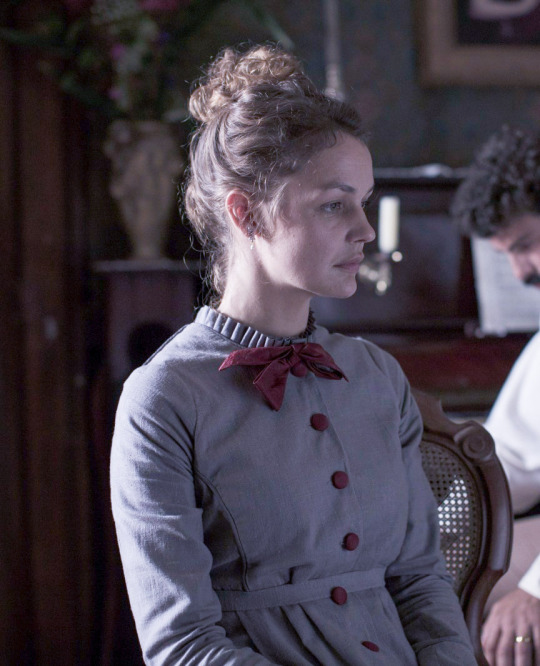

Luise Heyer as Maria Leopoldina of Austria, the Empress Consort of Brazil, Queen Consort of Portugal and Archduchess of Austria
Dona Maria Leopoldina of Austria (22 January 1797 – 11 December 1826) was born Caroline Josepha Leopoldine Franziska Ferdinanda of Habsburg-Lorraine in Vienna, Austria, Holy Roman Empire. She was the daughter of Holy Roman Emperor Franz II and Empress Maria Theresa of Naples and Sicily. In 1817 the Archduchess married Prince Dom Pedro of Braganza (12 October 1798 – 24 September 1834), heir to Portugal, later the Emperor Dom Pedro I of Brazil and King Dom Pedro IV of Portugal. The couple had 7 children: Queen Maria II of Portugal, Miguel, Prince of Beira, João Carlos, Prince of Beira, Princess Januária of Brazil, Princess Paula of Brazil, Princess Francisca of Brazil and Emperor Dom Pedro II of Brazil. On September 2, 1822 while she was the Acting Princess Regent of the Kingdom of Brazil in the absence of her husband Maria Leopoldina signed the Decree of Independence, declaring Brazil separate from Portugal. She died at age 29 in 1826 after a miscarriage. As Acting Regent Maria Leopoldina was the first woman to govern an independent Brazil, the first empress consort of the country, the first empress of the Americas and the first woman to govern an independent American country.
Victoria Guerra as Amélia of Leuchtenberg, the Empress Consort of Brazil and Duchess of Braganza
Dona Amélia of Leuchtenberg (31 July 1812 – 26 January 1873) was born Amélie Auguste Eugénie Napoléonne de Leuchtenberg in Milan, Kingdom of Italy. She was the daughter of Eugène de Beauharnais, Duke of Leuchtenberg and Princess Augusta of Bavaria, Duchess of Leuchtenberg. She was the second wife of Emperor Dom Pedro I of Brazil after their marriage in 1829 and they had one child, the Princess Maria Amélia of Brazil. After Dom Pedro I abdicated the Brazilian crown, Amélia accompanied her husband back to Europe. They held the titles of Duke and Duchess of Braganza until Pedro’s dead in 1834. Amélia died in Lisbon at the age of 60 in 1873.
A VIAGEM DE PEDRO | PEDRO, BETWEEN THE DEVIL AND THE DEEP BLUE SEA (2021). Dir. Laís Bodanzky
#a viagem de pedro#perioddramaedit#filmedit#movieedit#weloveperioddrama#worldcinemaedit#perioddramasource#onlyperioddramas#historicwomendaily#periodedits#braziliansource#cinematv#cinemapix#fyeahmovies#motionpicturesource#filmtv#filmtvdaily#userperioddrama#femaledaily#femalecharacters#flawlessbeautyqueens#historyedit#women in history#period drama#pedro between the devil and the deep blue sea#brazilian cinema#brazilian movies#mine#mine: edit#brazilian stuff
75 notes
·
View notes
Photo

Did You Know: The House of Bragança Edition #2
“Within days of his abdication on 7 April 1831, D. Pedro I sailed away taking with him Maria da Gloria, the young queen of Portugal, and his new wife Amélia of Leuchtenberg. He did not even say goodbye to his son, who woke to find his father gone. The little emperor was left with his two elder sisters, Francisca and Januária, but otherwise with no family.” (p. 300, The Braganzas The Rise and Fall of the Ruling Dynasties of Portugal and Brazil, 1640–1910, Malyn Newitt)
It is said that the abandonment left a deep scar on young Pedro II, though he never accused his father of having deserted him. Before the Emperor’s departure to Portugal, he had appointed a tutor, an official guardian, and a regency for his son until he became of age.
#reason no. I've honestly lost count of why I don't like Pedro I#poor Pedro II#it wasn't your fault kid#:(#Did You Know: The House of Bragança#pedro ii of brazil#pedro i of brazil#Brazil#Brazilian history#my entries
15 notes
·
View notes
Photo

Isabelle d'Orléans-Braganza, Comtesse de Paris (1911-2003).
She was a French-Brazilian memoirist and consort of the Orléanist pretender, Henri, Count of Paris.
She was the eldest daughter of Pedro de Alcântara, Prince of Grão-Pará, erstwhile heir to the throne of the Empire of Brazil (he was the eldest son of Isabel, Princess Imperial of Brazil, the elder daughter and heiress of Emperor Pedro II of Brazil, and Prince Gaston of Orléans, Count of Eu, grandson of Louis Philippe I), and his wife, Countess Elisabeth Dobrzensky of Dobrzenicz.
#royaume de france#maison d'orleans#bourbon orleans#isabelle d'orléans#comtesse de paris#orleans braganza#orleans bragança#house of orleans braganza
10 notes
·
View notes
Photo

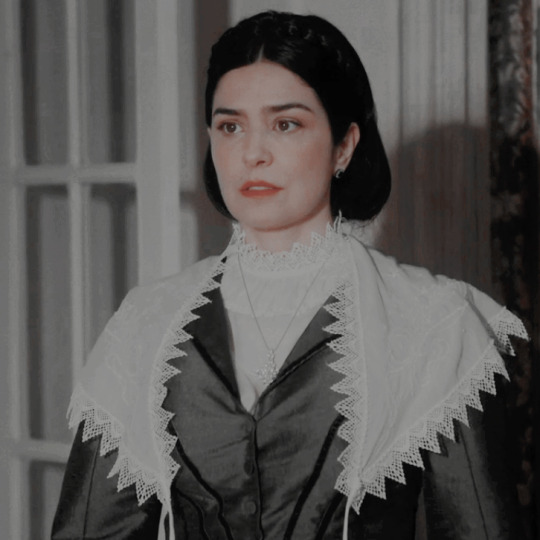

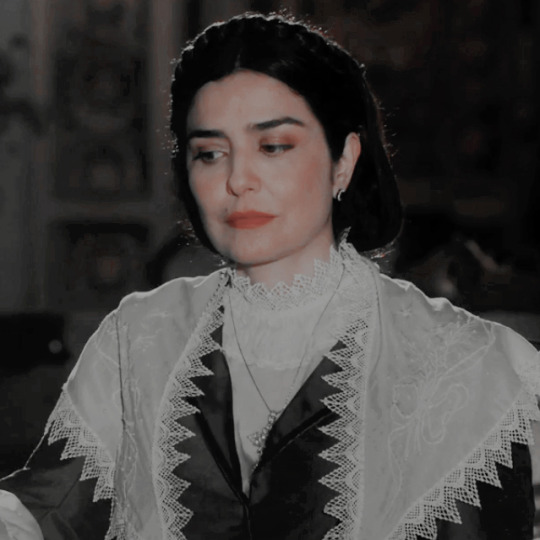

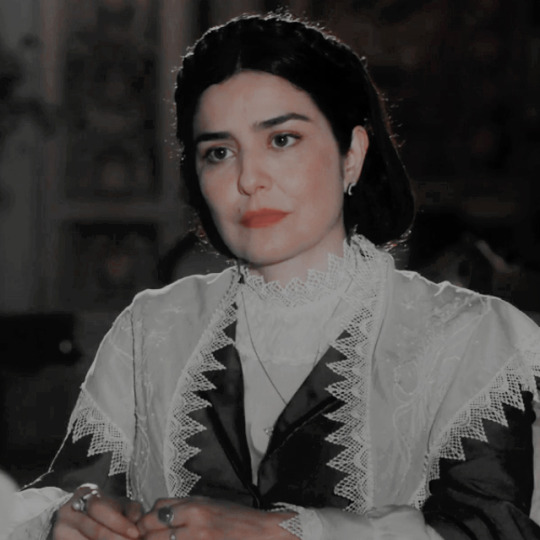
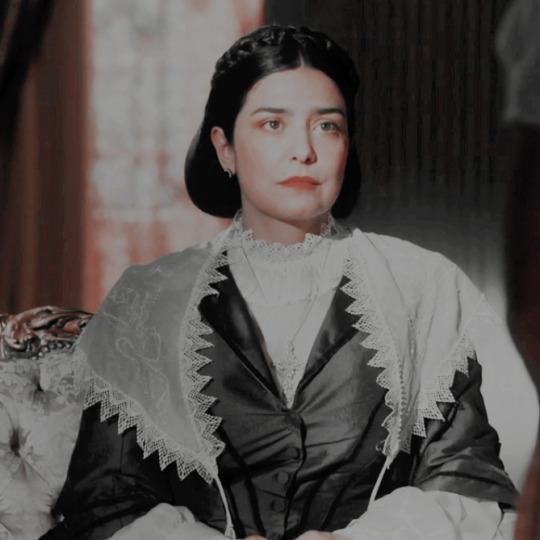

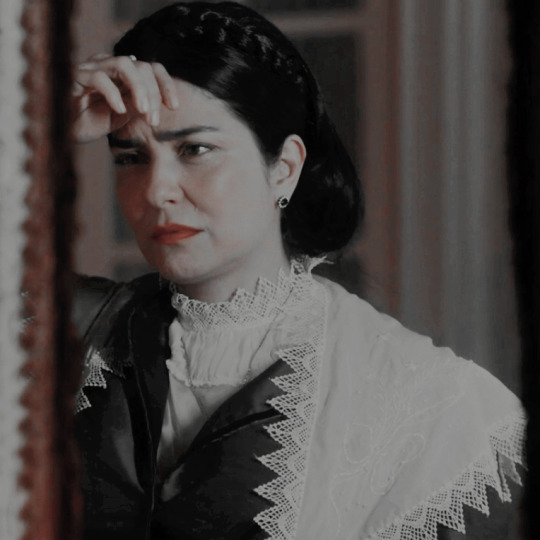
dona teresa cristina icons
leticia sabatella as teresa cristina, the last empress of brazil
Nos Tempos do Imperador (2021) by Rede Globo
Dona Teresa Cristina delle Due Sicilie (14 March 1822 – 28 December 1889), nicknamed "the Mother of the Brazilians", was the Empress consort of Emperor Dom Pedro II of Brazil, who reigned from 1831 to 1889. Born a Princess of the Kingdom of the Two Sicilies in present-day southern Italy, she was the daughter of King Don Francesco I of the Italian branch of the House of Bourbon and his wife Maria Isabella. It was long believed by historians that the Princess was raised in an ultra-conservative, intolerant atmosphere which resulted in a timid and unassertive character in public and an ability to be contented with very little materially or emotionally. Recent studies revealed a more complex character, who despite having respected the social norms of the era, was able to assert a limited independence due to her strongly opinionated personality as well as her interest in learning, sciences and culture. She is a Silenced Empress.
~{ like/reblog if use or credits on twitter @thekingfraser }
~{ don’t repost. }
#nos tempos da imperatriz#teresa cristina#dona teresa#mae dos brasileiros#dona teresa cristina#imperatrice#imperatriz do brasil#leticia sabatella#napoles#imperatriz napolitana#nos tempos do imperador#selton mello#dom pedro ii#pedro ii#thereza christina#Teresa Cristina delle Due Sicilie#the Mother of the Brazilians
22 notes
·
View notes
Text
TERESA CRISTINA & PEDRO II
The Royal Wedding of a Princess of the Two Sicilies and the Emperor of Brazil
(married 1843)

pictured above is a portrait of the Emperor and Empress of Brazil, from 1843
-------------------- ~ -------------------- ~ --------------------
SERIES - On this day September Edition: Teresa Cristina and Pedro were married on 4 September 1843.
-------------------- ~ -------------------- ~ --------------------
TERESA CRISTINA MARIA GIUSEPPA GASPARE BALDASSARRE MELCHIORE GENNARA FRANCESCA DA PAOLA DONATA BONOSA ANDREA D'AVELLINO RITA LUITGARDA GELTRUDA VENANZIA TADDEA SPIRIDIONE ROCCA MATILDE was the youngest daughter of Francesco I, King of the Two Sicilies and his second wife Infanta María Isabel of Spain. She was a member of the HOUSE OF BOURBON-TWO SICILIES and was from her birth in 1822 a PRINCESS OF THE TWO SICILIES.
PEDRO DE ALCÂNTARA JOÃO CARLOS LEOPOLDO SALVADOR BIBIANO FRANCISCO XAVIER DE PAULA LEOCÁDIO MIGUEL GABRIEL RAFAEL GONZAGA was the third son of Pedro I, Emperor of Brazil and his first wife Archduchess Maria Leopoldine of Austria. He was a member of the Brazilian branch of the HOUSE OF BRAGANZA and had been PEDRO II, the EMPEROR OF BRAZIL since his father's abdication in 1831.
When the Emperor was coming of age the Regency Council sought to find a wife for him. And when Ferdinando II, King of the Two Sicilies heard of the news he proposed his sister's hand and a portrait of the Princess was sent to Brazil.
The Council convinced the Emperor to accept the offer and they were married by proxy on 30 May 1843, in Naples, in a ceremony where one of the Princess' older brothers Leopoldo, Count of Syracuse represented the Emperor.

pictured above is a painting of the proxy wedding ceremony of the Princess of the Two Sicilies and the Emperor of Brazil (represented by the Count of Syracuse), by Alessandro Ciccarelli from 1846
After their wedding by proxy the new EMPRESS CONSORT OF BRAZIL sailed to Brazil, arriving at the Imperial capital Rio de Janeiro in September 1843.
On her arrival the Emperor rushed to meet her in her ship but was disappointed with her appearance. Although feeling deceived they were married the next day, on 4 September 1843, in a lavish religious ceremony at the Royal Chapel, in Rio de Janeiro.
They had four children (check the list below), two boys and two girls. However both their sons died young leaving their eldest daughter Princess Isabel as heir to the Imperial throne.
It was certain not a love marriage but they managed to live in good terms, besides the Emperor having had affairs with other women.
In November 1889 a military coup proclaimed the Republic of Brazil and the Monarchy was abolished. Two days later the Imperial Family was forced to flee into exile to Europe, arriving in Portugal by December 1889.
At the time of their arrival, Lisbon was being prepared for the acclamation of Carlos I, the new King of Portugal, a grandnephew of the former Emperor of Brazil, so they left to Oporto.
By the end of December 1889 the Provisional Government of Brazil passed a law banishing all members of the former Imperial Family to ever set foot in Brazil.
This news shattered the former Empress of Brazil, who was already sick, and she died on 28 December 1889.
-------------------- ~ -------------------- ~ --------------------
Following her death the former Emperor moved to Paris and died there in 1891, almost two years later. He never remarried.
-------------------- ~ -------------------- ~ --------------------
Because of the Banishment Law their descendants were not allowed to return to Brazil until 1920, when the law was revoked.
-------------------- ~ -------------------- ~ --------------------
TERESA CRISTINA and PEDRO II had four children...
Afonso, Prince Imperial of Brazil - died aged two;
Isabel, Princess Imperial of Brazil - wife of Gaston, Count of Eu;
Princess Leopoldina of Brazil - wife of Prince Ludwig August of Saxe-Coburg and Gotha; and
Pedro Afonso, Prince Imperial of Brazil - died aged seventeen months.

pictured above is a family portrait of the Brazilian Imperial Family depicting the Emperor and Empress of Brazil with their two surviving children Princess Leopoldina and the Princess Imperial, by François-René Moreaux from 1857
-------------------- ~ -------------------- ~ --------------------
Check my post about TERESA CRISTINA's mother!
Her mother was María Isabel, an Infanta of Spain from her birth in 1789.
#teresa cristina of bourbon two sicilies#princess of the two sicilies#pedro ii#dom pedro ii#emperor pedro ii#emperor of brazil#empire of brazil#house of bourbon two sicilies#bourbon two sicilies#house of braganza#braganza#brazilian imperial family#italian royals#brazilian royals#familia imperial brasileira#royals#royalty#monarchies#monarchy#royal wedding#royal history#italian history#european history#brazilian history#latin american history#world history#history#history lover#19th century#history with laura
25 notes
·
View notes
Text
Brazilian History: Ordem e Progresso, Verde e Amarelo, and the Grito da Independência
Not many flags around the world display more than three colors, and even a small number has words in them. Vexillology, the study of flags, has many guidelines and trends that explain what makes a flag or sign meaningful. Avoiding inscriptions is one of the first rules you’ll learn in a vexillology class, but the Brazilian flag is often noted as an exception for having it’s inscription — a small white line with the words “Ordem e Progresso”, meaning Order and Progress, written in — be effective and pleasing to behold. Those words, along with the four colors of the Brazilian flag, have a long history.
Brazil was subservient to Portugal until 7 of September of 1822, when Prince Dom Pedro I (1798-1834) declared the nation’s independence despite the wishes of his family. The story tells of him declaring independence near the Ipiranga river after being confronted by his father’s men on his way to São Paulo, raising his sword and shouting “Independência ou Morte!” (meaning “Independence or Death!”). This moment is captured in this painting by Pedro Américo from 1888, named “Grito da Independência” (meaning “Shout of Independence”). [1]

As you may suspect, there is no historical proof of such shout, so it reasonable to assume the prince said something more or less like that. This painting even has been picked apart by every Brazilian history teacher: D. Pedro’s entourage was certainly not as large; their clothes are too formal for such a long journey; the little house to the right of the frame is the Casa da Independência (meaning “house of independence”) and didn’t exist until 1884; they were riding mules, which are more resistant to the journey and climate, not horses; the Ipiranga river is just in the wrong place; the guy at the left, the lone guy in a horse, that’s José Américo, the painter, who was born 21 years AFTER the event depicted (talk about a self insert); and the randos watching it in the left were probably not there since the region was not as populated. [2]
You see those white-armor soldiers there? They are the Dragões da Independência (meaning “Independence Dragons”, which s just... So metal). They were not there, they just look cool. Which, fair. Every country does not teach their history to the full extent, often using inaccurate symbols of glory. I guess Dom Pedro I wouldn’t like you knowing that he was having stomach aches and had to make many stops to shit “help himself” to the high grass.

Dom Pedro I (1798-1834). Check that high collar! What a nerd.
According to Laurentino Gomes, author of the book 1822, the monarch was experiencing strong stomach aches a while before the declaration of independence. [3] He says:
Witness of the event, Colonel Manuel Marconde de Oliveira Melo, sub comander of the honor guard and future baron of Pindamonhangaba, used in his memoirs an euphemism to describe the prince’s situation. He says that, in regular intervals, D. Pedro saw himself obligated to dismount and “help himself” in the dense thicket that covered the roadside.
The move (The shout of independence, not the stomach ache) was further telegraphed by Dom Pedro’s speech in the 9 of January of that same year, now known as Dia do Fico, of which words were immortalized to history and in the Brazilian lexicon. During the royal family’s stay in Brazil, the country had been raised from a colony to an united kingdom, and later Dom Pedro I was appointed regent prince. He and the other nobles of Brazil were afraid that if the prince returned to Europe, the Portuguese court would demand Brazil be turned back into a colony, which would hinder their rights to trade with other nations. [4] That assumption was correct and D. Pedro I, at that January day, said:
“If it’s for the good of all and general happiness of the nation, I’m ready. Tell the people I stay.” - D. Pedro I
The first one
D. Pedro I was crowned Emperor in the First of December and, after some conflicts between the Imperial army and loyalist forces, Brazil had become a nation. The flag born after that was similar, but quite different to the current Brazilian flag. [5]

The green is the color of the House Bragança, D. Pedro’s family, and the yellow is the color of House Habsburg-Lorraine, of Archduchess Maria Leopoldina of Austria, his first wife. In the middle, Brazil’s coat of arms. Unfortunately, this flag is still used by Brazilian monarchists, who are understandably disillusioned by Brazil’s democracy and (less understandably advocate for a restoration of Brazil’s Monarchy. We at Um Cadín of Brazil recommend you give those clowns no time of your day — it’s no coincidence they are so often aligned with the countless dictatorships that happened in Brazil.
Green and yellow (and the other ones, I guess)
After Brazil outlawed slavery completely in 1888, the monarchy became much disliked by Brazil’s elites and a coup easily overthrew Emperor Dom Pedro II in 1889. What followed was Brazil’s first republic, now known as the oligarchic era. As way to keep national identity and unity, the flag was remade by Décio Vilares to what we known today, kept similar in style and color. The meaning of each color also changed.

White symbolizes the aim for peace, blue represents Brazilian skies and rivers, yellow symbolizes the nation’s gold and riches, and the green represents our nature and forests. Also unfortunately, Brazil’s flag has been used as a symbol os strong nationalism by several groups since its creation, from the fascism of Vargas and the Estado Novo, to the Military Dictatorship's violent nationalist sentiment, and even current Christian conservative wave headed by Bolsonaro and his supporters. If you wondered why we don’t have the Brazilian flag on our blog, now you know. We don’t wanna pass the wrong impression.
Now finally, Ordem e Progresso is a reference to a phrase by French philosopher Auguste Comte. Considered the founder of Positivism, Comte famously said “L'amour pour principe et l'ordre pour base; le progrès pour but“ (meaning “Love as a principle and order as a basis; progress for a goal”). [6]
Sources: [1] [2] [3] [4] [5] [6]
#Brazil#Brazilian history#Brazilian flag#Dom Pedro I#Dom Pedro II#Um Cadín of Brazil#Brasil#História do Brasil
14 notes
·
View notes
Text
Crozier and HMS Stag
A very rough outline of HMS Stag’s activities between 1831 and 1835.

T.P. Coode, H.M.S. Stag 1830. 1843. National Maritime Museum, London [x]
HMS Stag, a fifth-rate frigate and the fourth Navy ship of that name, was built in the late 1820s and launched in October 1830. On April 15th 1831, she was commissioned under the command of Captain Sir Edward Thomas Troubridge, who was intended to take over as commander-in-chief on the coast of Ireland. Crozier was appointed to her on April 26th, the third of four lieutenants. After fitting out at Plymouth, Stag joined Sir Edward Codrington's training squadron at Spithead in the summer of 1831. By mid-August, she was taking part in gunnery and maneuvering practice off Land's End; the Hampshire/Portsmouth Telegraph, commenting on the squadron, noted that "Stag has established for herself an excellent character". Although Stag had originally been destined for Ireland, she spent much of 1831 in English ports—Troubridge had been elected to Parliament in May 1831, and his voting record shows that he was a frequent attendee. Stag left England for Cork in late January 1832, under the temporary command of William Herringham while Troubridge was on another leave of absence, but returned to Plymouth by late March. [1]
At this point, it becomes necessary to delve into Portuguese dynastic politics (about which I know practically nothing, so apologies if this summary is reductive). The current king of Portugal, Miguel I, had usurped the throne from his niece, Queen Maria II, in 1828. Three years later, Maria's father, Pedro I of Brazil, abdicated the crown of Brazil and sailed to the Azores, the one territory that remained in Maria's power, with the intention of invading Portugal to depose his brother and restore his daughter to the throne. Britain provided Pedro with a limited amount of naval support, and Stag was ordered to Madeira in late March 1832 to keep an eye on naval developments in the brewing civil war. She remained at Madeira for at least two months; Troubridge complained to his wife that he was "sorely disappointed at being kept there so long”, and Crozier had several opportunities of trying the British consul's homegrown tea, which he later described as detestable. The next few months proved to be more interesting, as Stag spent May and June carrying intelligence from the Azores to Portugal and back again; Pedro visited the ship on June 29th. Stag accompanied the invasion force to Oporto in northern Portugal, where Pedro's forces landed on July 8th, and she stayed off the Portuguese coast for the next few months. [2]

Johann Michael Voltz, Landing of the liberal forces in Oporto on 8 July 1832. c. 1833.
Then a different European crisis interrupted: in October 1832, Stag joined a combined British-French squadron blockading ports on the Dutch coast in order to force the king of Holland to accept Belgium’s independence. Nicholas Lockyer replaced Troubridge as captain on October 12th; Crozier would later ask James Clark Ross to name an Antarctic cape after "his friend Captain Nicholas Lockyer," so they seem to have gotten along well. Stag captured a Dutch merchant ship in November, and appears to have spent most of the next few months off the Dutch coast and in the North Sea, with occasional returns to England. A British-French-Dutch settlement ended the blockade in June 1833, and the combined squadron dissolved; Stag set off for Portugal, where the civil war was still ongoing. [3]
The conflict in Portugal ended with Miguel I's abdication and banishment on May 26th 1834, but Stag still had a role to play. Under the terms of the peace treaty, Miguel was allowed to leave the country from whichever port he chose on a ship belonging to one of Portugal's allies (Britain, France, Spain, and Belgium); he chose the port of Sines and an English ship. Six days later, the restored queen's supporters escorted him aboard Stag at Sines, while the townsfolk pelted him with stones. He brought somewhere around sixty people with him—almost a fifth of Stag’s complement—so they were distributed between Stag and another British ship in the port, HMS Nimrod. The two ships ferried the exiled king and court to Genoa, where Miguel received a festive welcome: a letter from a British resident in the city described a series of dinners and parties both in the city and on board the ships. [4]
Stag then returned to Lisbon; she sailed back to England in early August, and spent two months refitting in Plymouth. By the end of the year, Crozier was serving as the ship's first lieutenant; he was the only one of Stag's original lieutenants who stayed with her for her entire commission. [5]

Thomas Goldsworthy Dutton, His Grace the Duke of Portland Yacht Pantaloon beating to Windward with the Frigates &c. of Sir Edward Codrington's Fleet off the Dodman on the 21st July 1831. 1833. National Maritime Museum, London. [x] (Stag is on the left.)
Stag remained on the Portuguese station until early August of 1835, when, along with HMS Clio and HMS Tweed, she left Lisbon for the Gambia to settle a trade dispute. By the time the ships arrived in mid-September, the dispute was already over. They returned to Lisbon on October 23rd, having called at Senegal on the way; Clio and Tweed were forced to quarantine on their return due to outbreaks of fever on board, but Stag was spared. Her last spell at Lisbon lasted less than a month: she returned to England on November 25th with dispatches from Lisbon, and was paid off at Plymouth on December 16th. One week later, Crozier was appointed as first lieutenant on HMS Cove, which Ross was preparing to take north to relieve whalers that had been trapped in Davis Strait. [6]
This is by no means a comprehensive account of Stag's movements between 1831 and 1835, and it's drawn mainly from newspaper reports, not official logs. Likewise, it's focused on the ship itself, rather than Crozier; I don't know whether he was on leave from the ship at any point (though it's worth noting that his father died in November 1831). Still, I hope this helps shed a little light on what Crozier was up to during this period.
Notes:
Rif Winfield, British Warships in the Age of Sail, 1817-1863, 159; David R. Fisher, "TROUBRIDGE, Sir Edward Thomas, 2nd bt. (?1790-1852), of Rockville, North Berwick, Haddington," History of Parliament Online; The Navy List, Sept. 1831, 80; Hampshire/Portsmouth Telegraph, Aug. 15 1831; Hampshire/Portsmouth Telegraph, Dec. 26 1831; The Navy List, Mar. 1832, 81.
Fisher, "TROUBRIDGE, Sir Edward Thomas"; Joseph Dalton Hooker to William Jackson Hooker, Feb. 3 1840, JDH/1/2 f.15-23; Derby Mercury, July 11 1832; Times, July 10 1832; Caledonian Mercury, July 19, 1832; Times, August 27 1832; Morning Post, September 1 1832.
Morning Post, Oct. 16 1832; William Richard O’Byrne, "Lockyer, Nicholas," A Naval Biographical Dictionary; James Clark Ross, A Voyage of Discovery and Research in the Southern and Antarctic Regions, 2:346; Morning Chronicle, Nov. 21 1832; Times, June 3 1833; Standard, June 10 1833.
Times, June 4 1834; Times, June 25 1834; Standard, July 10 1834.
Hampshire/Portsmouth Telegraph, Aug. 11 1834; Morning Post, Oct. 6 1834; The Navy List, Dec. 1834, 80.
Morning Post, Oct. 6 1835; Morning Post, Nov. 4 1835; Southampton Herald, Nov. 14 1835; Morning Post, Nov. 28 1835; Hampshire/Portsmouth Telegraph, Dec. 21 1835; O'Byrne, "Crozier, Francis Rawdon Moira," A Naval Biographical Dictionary.
76 notes
·
View notes
Photo
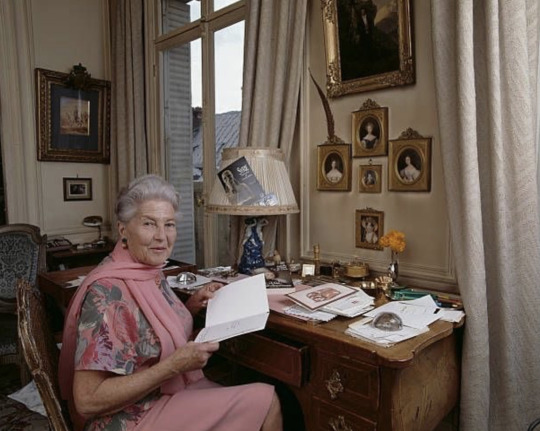
L’Histoire! Depuis mon enfance je pourrais dire que je n’ai cessé de trébucher sur elle! Nos aïeux, nos demeures, nos souvenirs, se confondent avec l’Histoire de France.**
- Isabelle, Comtesse de Paris
Isabelle Marie Amelie Louise Victoire Thérése Jeanne of Orléans and Bragança otherwise known as Isabelle, Comtesse of Paris, was a grand dame contemporary France. She was a renowned and stylish beauty, her photograph appeared in magazines throughout the world and she published biographies of ancestors who had been queens of France.
For many French royalists today her name today is still spoken with reverance. In many ways her death in 2003 at the ripe age of 92 years old was an an immeasurable loss to the French royalist cause. Her popularity was due to her character and that appeal was more favourably seen than the aloof haughtiness of its republican leaders from de Gaulle to Chirac.
When I have dinner with my French partner’s family and their circle of close knit friends her name often comes up as a way to lament the current crop of hapless Orléans descendents and how Republican France has lost its way.
I confess I didn’t know too much about her as she died around the time I was just a wee child. But living here in Paris as an adult (and foreign outsider) I have come across her ghost in late night laments over cigars and cognac as to what a wonderful and robust character she was from those who were her friends or knew her well.
In many ways such French royalists (a minority to be sure but still more than one might suppose) often believe that she would have made a worthy monarch than her hapless husband, Henri.

Indeed Isabelle was married for 68 years to the pretender to the French throne, Henri d'Orléans, the Comte de Paris ( who died in June 1999), whom she believed should have been Henri VI, King of France. She too was an Orléans, the great-great grandaughter of Louis-Philippe I, France's last king, who lost his throne in the revolution of 1848.
She was thus sometimes called the Princess of France, but, although tolerant of this indulgence, her loyalty was firmly to the royalist cause and to her husband's work.
Isabelle was born in 1911 at the Chateau d'Eu, in Normandy, where Queen Victoria and Prince Albert had been received in 1843 by Louis-Philippe and the first entente cordiale had been established. She was the eldest daughter of Pierre d'Orléans-Bragance, whose mother was the daughter of the Emperor of Brazil, and Elizabeth Dobrzenski, of an aristocratic Czech family.
She thus had a rich background, linked to the royal families of France, Portugal and Brazil, and to the old Bohemian aristocracy. All her life she cherished these connections, encouraging her own daughter to decorate her chateau of Le Lude, in the Sarthe, with a portrait of her ancestor, the Emperor Pedro II of Brazil.
Isabelle spent much of her childhood at the chateau d'Eu, and was educated by the sisters of Notre-Dame de Sion in Paris. In 1931, at the age of 19, she married her cousin Henri, who, since 1926, had been heir to the French throne.

The wedding had not been easy to arrange. By a law of 1886, those who claimed descent from a French monarch were not allowed to live in France, so the comte, who had been brought up in Morocco, Belgium and elsewhere, could not be married in France. He attempted to arrange the ceremony in Brussels but, apprehensive about royalist demonstrations there, the French persuaded the Belgians to refuse permission. In the end, the wedding took place in Palermo, Siciliy.
It was, none the less, a famous occasion. Many royal families were represented, and French royalists attended in their thousands, led by Charles Maurras and Léon Daudet of Action Francaise; it was widely reported that their cry was "Vive le Roi". The bride wore a dress by Worth, decorated with fleurs de lys.
Isabelle's famed good humour was tested by the complications of exile - for many years she and the comte stayed in Belgium, Brazil, Morocco and Spain, after sharing with relatives. The situation changed dramatically in 1950 when the government in Paris, beset by war in Indochina, repealed the 1866 law, and the comte and comtesse returned to live at Coer-Volant, a manor house in Louveciennes.

But still life had many difficulties. Isabelle's relations with her husband were often problematic, and they began to live apart. Henri was not an easy Pretender - he squandered a fortune, and not too discreetly kept a mistress. He was, after all, an Orleans as Isabelle stoically observed.
Henri was busy publishing news bulletins and negotiating with a wide range of politicians; at one point, he hoped to succeed General de Gaulle as president of France. Then he quarrelled with his eldest son and heir, and spent his money recklessly. But Isabelle never complained: "I'm sorry for my husband," she used to say. "I was never an obedient wife. I was too easily impatient." They separated in 1975; formally in 1986; but never divorced. Madame retained her dignity. When he died in 1999, Henri willed Isabelle any remaining worldly goods.
The saddest moment of her life was the death of her son François in 1960, while serving with the French army in Algeria. She said that his death was in the Orléanist tradition of serving France. Another of her sons, Thibert, died in a hunting accident in central Africa.

Isabelle was usually dressed in large hats, and wore a quadruple necklace of pearls. On special occasions, she also wore a famous sapphire and diamond tiara that had once belonged to the famous Marie-Antoinette. In addition to three volumes of memoirs, she published biographies of Marie-Amélie, the wife of Louis-Philippe I, and Marie-Antoinette.
She died in 2003 at the grand old age of 92. She was survived by nine of her 11 children, and more than 100 descendants. It has been said to me that none of her descendants have ever come close to her populist charisma, fun loving and good humour, quiet intelligence, chic style, genuine humility, and robust sense of noblesse oblige. Some have quietly withered away into bourgeois conformism, others into social obscurity, and a few morphing into spoiled Euro trash brats (the latter is well known to me from my Swiss boarding school days).

Her funeral was a cause of considerable widespread sadness. She had her faults of course but even here she was not lacking in self-awreness. She used to say, “"Cultivez vos défauts, c'est ce que vous avez de mieux." (Cultivate your faults, that’s the ebst you have). And yet even her most anti-royalist detractors noted their admiration for her down to earth good nature and easy charm. She was the nation’s favourite grandmother who stuffed your pockets with bonbons (candy) and told you how much you were loved as someone said in reflection. And that mischievous fun loving laugh, they still hear it today in some homes. As the grandmother of a friend who also was a good friend of Isabelle, Comtesse de Paris, put it, ““C’etait une grande dame....beaucoup de classe et de dignité. Elle aurait fait une bonne reine.”
**History! Since my childhood one could say that one never stopped stumbling on it! Our ancestors, our homes, our memories, merge with the History of France,
#isabelle#comtesse de Paris#orleans#monarchy#french#france#bourbon#henri d'orleans#royalty#republic#society#culture#personal
69 notes
·
View notes
Text
Events 3.9 (before 1940)
141 BC – Liu Che, posthumously known as Emperor Wu of Han, assumes the throne over the Han dynasty of China.
1009 – First known mention of Lithuania, in the annals of the monastery of Quedlinburg.
1226 – Khwarazmian sultan Jalal ad-Din conquers the Georgian capital of Tbilisi.
1230 – Bulgarian Tsar Ivan Asen II defeats Theodore of Epirus in the Battle of Klokotnitsa.
1500 – The fleet of Pedro Álvares Cabral leaves Lisbon for the Indies. The fleet will discover Brazil which lies within boundaries granted to Portugal in the Treaty of Tordesillas in 1494.
1701 – Safavid troops retreat from Basra, ending a three-year occupation.
1765 – After a campaign by the writer Voltaire, judges in Paris posthumously exonerate Jean Calas of murdering his son. Calas had been tortured and executed in 1762 on the charge, though his son may have actually died by suicide.
1776 – The Wealth of Nations by Scottish economist and philosopher Adam Smith is published.
1796 – Napoléon Bonaparte marries his first wife, Joséphine de Beauharnais.
1811 – Paraguayan forces defeat Manuel Belgrano at the Battle of Tacuarí.
1815 – Francis Ronalds describes the first battery-operated clock in the Philosophical Magazine.
1841 – The U.S. Supreme Court rules in the United States v. The Amistad case that captive Africans who had seized control of the ship carrying them had been taken into slavery illegally.
1842 – Giuseppe Verdi's third opera, Nabucco, receives its première performance in Milan; its success establishes Verdi as one of Italy's foremost opera composers.
1842 – The first documented discovery of gold in California occurs at Rancho San Francisco, six years before the California Gold Rush.
1847 – Mexican–American War: The first large-scale amphibious assault in U.S. history is launched in the Siege of Veracruz.
1862 – American Civil War: USS Monitor and CSS Virginia (rebuilt from the engines and lower hull of the USS Merrimack) fight to a draw in the Battle of Hampton Roads, the first battle between two ironclad warships.
1908 – Inter Milan was founded on Football Club Internazionale, following a schism from A.C. Milan.
1916 – Mexican Revolution: Pancho Villa leads nearly 500 Mexican raiders in an attack against the border town of Columbus, New Mexico.
1933 – Great Depression: President Franklin D. Roosevelt submits the Emergency Banking Act to Congress, the first of his New Deal policies.
0 notes
Note
and I know it's unfair because I haven't answered the ask yet but you're Brazilian so you know way more than me but I'd love to hear your thoughts about Imperial Brazil?? I'm really struggling with him bc i know about him in this era more from a portuguese perspective.....
YOU THOUGHT I WOULDN’T ANSWER THIS HUH
Sorry for taking so damn long audshdf I was saving this ask to do a real deep dive into the whole empire with a lot of historical explanation and a lot of detail buuuut I was having some trouble coherently organizing my thoughts about Pedro II’s reign so instead I’m gonna use this ask to more loosely talk abt the first half of the empire. You’ve seen my basic thoughts on the second half on that other post, so now I’m gonna ramble mostly about 1808-1840.
Also, hm, this is LONG. It’s embarrassingly long. I hope you have time.
And yes 1808-1822 is not part of the empire, but Brazil was no longer a colony in practice during those years, and I think they were crucial to his development as a person.
Before 1808, Brazil pretty much grew up alone. His mother was around less and less, and he had no friends. Portugal was, as we already know, a shitty dad. Up to that point, he was not only absent but also very controlling. He never allowed Brazil or his people to learn how to read, Brazil wasn’t allowed to have libraries or universities or newspapers or even print. Portugal alienated Brazil both from his mother and from Port himself. He was forcefully kept from developing his own ideas, and his growth was stagnant – even physically. The way I see it, after 300 years he was still a small child, while the others around him were already growing into teenagers even though they were younger in actual numbers. Portugal literally kept him from developing as a person, by force.
But suddenly, Portugal needed him. Suddenly, he showed up at his shore, with hundreds of people, and objects, and books. And though Portugal desperately needed Brazil at that time, his king couldn’t be there with Brazil being like that. That land with no cities and no libraries and no economy no nothing because he was forced to have nothing.
He starts growing really, really fast, and forcefully again. And it was a painful process – his people were being kicked out of their houses so that the people that arrived from Portugal had where to live. In a few years, he grew almost as fast as humans did. But it was still an incomplete growth – most of his people were still living in misery, but now he had a structured state that allowed him to more firmly fit into what a nation means. But it all happened so fast he was… dizzy.
And that was all combined with what was happening in his relationship with his father. They had both gotten much closer now that Portugal was physically there more often. I think Portugal is considerably less shitty to Brazil during these years, both because he needs him and because he is a relief from everything going on in Europe. But that doesn’t mean he became a good dad, but also Brazil was a lot smarter now, a lot freer, and quick to realize something that had always been true – Portugal needed Brazil more than Brazil needed Portugal. Much more.
The fact that he wasn’t a colony anymore but wasn’t quite independent, and thus still had to obey Portugal to some degree, started to annoy him. This has quite a bit of teenage rebellion element into it, but that doesn’t mean it came from unjustified anger. Not at all. His pride and ego were starting to really develop. The king of Portugal liked him better than he liked port himself, Brazil was heaven on earth, Brazil was rich, Brazil was full of potential, Brazil was great, Brazil was paradise, Brazil was not his own.
And that just keeps building.
And when Portugal starts talking about making him a colony again. After all that shit about the being a united kingdom, about Portugal being his father and trying to get close to him, of seeing him as a refuge and a relief, after all of that connection I think Portugal genuinely tried to build with him, the ugly truth is bare again – Portugal never saw him as worthy of equal footing, never saw that united kingdom as anything but temporary, never saw brazil as anything more than a colony.
And Brazil is mad.
When he found out the plans of Pedro I to declare independence, he’s more than happy. He’s been thinking of it for a while, and I think maybe deep down he didn’t love the idea of another Portuguese man being his boss, but Pedro had grown up in brazil, dude was carioca at heart, his wife was wonderful, Brazil could work with that. He declared independence, fought against Portugal, won, still had to pay for his independence, but, at last, he got it.
I think in a way Brazil’s anger, as righteous as it was, did blind him to what was going on. He wanted so bad to get rid of Portugal and avoid going back to how it was when he was a colony, that he waved away or even approved things that really just kept him stuck in the same place. Very little actually changed for most people, and as someone who literally represented all the people, he knew that and could feel that, but he was still so euphoric personally about it that he… ignored it.
Pedro I’s reign was… messy. He needed a constitution, he got into a war with Argentina, everyone was talking about who Pedro was fucking, it was just a whole mess. For that reason, I think despite declaring his independence, brazil remembers Pedro as being mostly an irresponsible asshole who couldn’t keep it in his pants and was too busy being a playboy to rule this country yet still managed to be authoritarian and also made him lose Uruguay. And when it came time for him to choose Brazil or Portugal, just like his father, he chooses Portugal.
That was a blow on his ego. Brazil at this point was still just a teenager, who had in two decades grown insanely fast for a nation, has been told by each king his land was heaven on earth and so much richer than Portugal, yet no one was willing to choose him. Ever. He was still an afterthought. Like a colony, that still had a metropolis. Pedro left him with a 4-year-old, with a government disorganized, and no money.
And then the Provinces start to rise up.
So, hm, a quick background on how I see the provinces: Some of them existed since around 1530, some were younger and some weren't around yet, and if Brazil first appeared representing the people that were born in this new colony, the provinces were much more… administrative and political. Yet many of the ones that were around grew much faster than Brazil – they were already teenagers or even adults by independence. They had always responded directly to Portugal and for a long time saw no connection between themselves or between them and Brazil. The idea of “Brazil” was only like… 100 years old, even less than that. And some of them were not loving being attached to those two kids – Brazil and the baby emperor. They saw the weak government of the regency as a chance to rise up and declare their own independence, as many who started as provinces around them had – like Uruguay.
The regency lasted 9 years, but I think those few years were also crucial to form Brazil as a person, due to how stressful they were. Think about it, he saw what was happening around him, with Spain’s former colonies. And I think he for the first time had to grapple with the very human existential fear of death.
If each of his provinces became their own country, would he still be around? Would he just become… Rio? But Rio existed as a province too. Would he just… be a lot of different countries? Probably not. He would probably disappear. He had only just started to be allowed to live, but that could be taken away at any moment. Uruguay and Rio Grande do Sul succeeded in getting their independence. How long until the others? It was quite terrifying. And I think that experience not only made him averse to the idea of being a republic in general at the time, but also created a lot of emotional and psychological problems for him, a lot of insecurity, as well as it made him realize he was nothing. There was nothing to justify his existence. He couldn’t say he existed because he wanted freedom or republic, he had none of these, plus it was something the provinces too could have. What united that land? What made him him? Those were all questions that would haunt him for the rest of the empire, and he would soon be more than willing to go after and accept easy answers. That’s how he gets to that whole indianismo think I talked about some time ago.
He fights his own provinces, on people, countless times. Revolts that really were like civil wars kept popping, and he, who was just a teenager, had to fight to oppress his provinces and force them into being a part of him, for a reason he himself didn’t know. He couldn’t explain why they should be a part of him, except that they were and he wanted them to be and he wanted to live. And he didn’t know why.
In summary, this whole period was one of fear, and insecurity, and doubt. It shook him profoundly as a person more than as a country. Because once Pedrinho was in power, things were quick to stabilize and it was, in some ways, as if those revolts had never happened, but Brazil remembered them, he lived through them, and never really forgot that fear.
If the regency was marked by external peace and internal turmoil, Pedrinho’s reign was one of relatively internal peace and external turmoil. Pedro II was… a complicated figure. Most Brazilians today regard him as an excellent ruler and a wise man, but I at least can’t be this optimistic about the man who insisted on the Paraguayan war, refused to abolish slavery for decades, and basically laid ground to a lot of the problems we still have today, like bad distribution of land and late industrialization. He didn’t do all that by himself, of course, a lot can be blamed on the senate, but he was the most powerful man on the country, and he receives way too much credit for his personal beliefs of being an abolitionist and a pacifist. Maybe he really was both these things, but that doesn’t change the fact that he didn’t use his power to end slavery and avoid war, quite the opposite. And why is that important here? Because I think brazil, the tan, was also fooled by it. He quickly bought into the narrative that Pedro II was this wise incredible man, and overlooked all the ways he kept the worst structures of the country untouched in order to not upset the elite that kept him in power. Brazil wanted nothing but stability and power, and Pedro, looking like the opposite of his father at the surface, brought that. There were no more separatist movements or civil wars once he rose to power, Rio Grande do Sul was reabsorbed, and the years that followed were ones of relative prosperity, and all of that really made brazil more and more attached to the whole concept of the empire. I think just like he was willing to ignore a lot of things during independence for the sake of it, here too he ignored all the ways Pedro II held him back so that he could fully feel the pride of being a powerful empire.
Brazil really did like being an empire during that time. The narrative of the empire was one that answered the question that haunted him for so long – what justified his existence. Justifying it, in the 19th century, is what I believe to be the main motivation underlying everything he did and thought. And the narrative was that the empire guaranteed stability and avoided civil wars and fragmentation, allowing Brazil to be, to quote José Bonifacio, “This majestic and solid piece of social architecture from the Prata to the Amazonas”, and again, all that in comparison to his neighbors that were constantly drowning in civil wars and fragmenting. For stability and that justification, he was willing to turn a blind eye to anything else.
So he rose from the regency feeling stronger than ever. Pedrinho had put everything into place, he was growing, he had a Brazilian in power for the first time, his coffee was going well, and he had survived. Many of his neighbors hadn’t, or at least not in the sense of managing to keep their territories intact. He did. His neighbors were unstable, with wars and coups and wars (like he hadn’t just had exactly that), he was stable and growing and he was the strongest. Once free of the fear of being destroyed from the inside, his ego grew once again, and he felt good. He felt pride in being a big strong and centralized empire, and to look down on the other Latin Americans and even on his father. He was ready now to make his power and influence spread, as an Empire.
That's it, sorry if this is both ridiculously long and also a mess, I have way too many thoughts about imperial brazil and I could've probably written ten more pages of it and still have something to say. Also I'd still love to hear your thoughts on the empire for a Portuguese perspective, because I genuinely have no clue what that would look like. But anyway hmm I hope this was fun?
#ask#sorry this is so goddamn long but come on yall know me at this point i cant and wont shut up#long post#hcs
15 notes
·
View notes